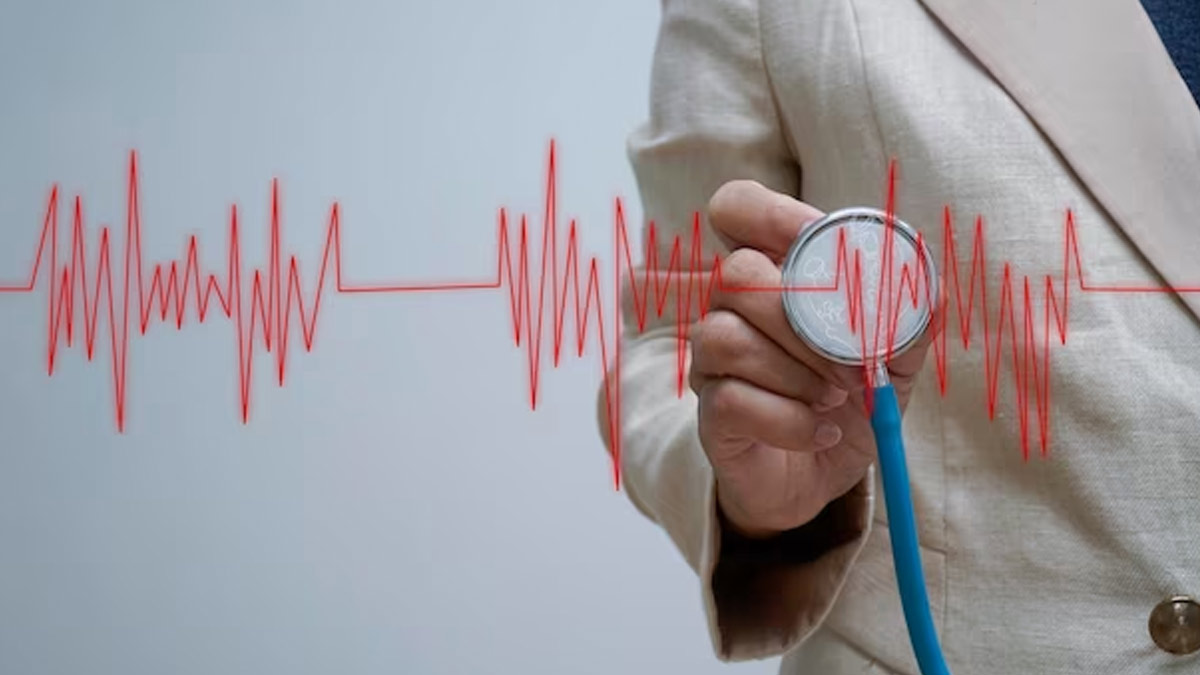
The human heart is a wonder, just about the size of your closed fist, tirelessly beating throughout one's entire lifetime. These rhythmic and synchronised beats pump blood efficiently to all parts of the body. The process of maintaining a normal rhythm is controlled by electric signals sent out by the upper right chamber of the heart. However, sometimes these electric signals become erratic and result in heartbeats that are ‘arrhythmic’ or irregular. This condition is known as Atrial Fibrillation (AF or AFib) and may lead to complications, such as stroke and heart failure. We spoke to our expert Dr Prakash Kumar Hazra, Head – Department Of Cardiology, AMRI Hospitals, Kolkata, who explained this condition, its types, causes, symptoms, and treatment strategies,
Table of Content:-
According to StatPearls, AF stands as the prevailing form of cardiac arrhythmia, primarily attributed to irregular electrical impulses within the heart's atria, resulting in fibrillation. This condition is identified as a tachyarrhythmia, indicating frequent episodes of rapid heart rate.
Causes and Susceptibility

Structural damage to the heart is a common cause of erratic electric signal behaviour. Individuals most susceptible to AF include those with:
- High blood pressure
- Diabetes
- Thyroid issues
- Infections, such as rheumatic heart disease
- Ageing exacerbates structural damage, further increasing the risk
According to a 2017 study, risk factors associated with AF trigger alterations in the structure and histopathology of the atrium, marked by fibrosis, inflammation, and cellular as well as molecular modifications.
Also Read: Heart Failure And Weight Gain: Expert Explains The Connection Between The Two
Types and Symptoms
Dr Hazra said that AF can manifest in two primary forms, including:
- Persistent AF: Characterised by uninterrupted irregular heartbeats
- Paroxysmal AF: Involving irregular heartbeats that come and go

People who have either of the two types of AF can feel these irregular heartbeats as fluttering or pounding in the chest or palpitations. Its symptoms include:
- Palpitations
- Dizziness
- Chest pain
- Shortness of breath indicating a compromised pumping system
“In the long term, the faulty pumping system leads to the pooling of blood in the upper chambers of the heart. This can lead to the formation of a blood clot that can reach the brain and cause a stroke”, said Dr Hazra.
Diagnosis and Awareness
Some individuals with AF do not manifest symptoms of the condition. In fact, 40% of people are unaware that they are living with this condition.
“Diagnosis often occurs when they get a stroke. This is dangerous because a stroke can often lead to permanent brain damage and disability. Studies have shown that 10-25% of people who get a stroke have underlying AF”, highlighted Dr Hazra.
Also Read: Right Vs Left Heart Failure: Expert Explains These Heart Failure And Lists Treatment Therapies
Treatment Options

Dr Hazra listed the treatment options for AF as follows:
- There are three types of medicines used in the treatment of AF, medicines that lower the heart rate, medicines that restore the heart rhythm and anticoagulants that prevent the formation of blood clots, thereby preventing a stroke.
- In cases where medical therapy does not work, a procedure is done to reset the rhythm of the heart through electric shocks or intravenous medicines. This is known as ‘cardioversion.’
- If this method proves ineffective, the sole recourse is to opt for surgery. Surgery involves applying heat or cold energy to the heart so that its rhythm becomes regular.
Prevention And Management
“Ageing adults who are at a high risk of AF need to visit a cardiologist regularly. The cardiologist may be able to diagnose AF by palpation of pulse or through an ECG, especially in people with persistent AF who have continuous irregular heartbeats”, said Dr Hazra.
“However, paroxysmal AF is difficult to catch with an ECG or pulse palpation because the irregular heartbeats come and go with intervals of regular heartbeats in between. For this reason, in some people, cardiologists may recommend 24-hour monitoring of the heart known as Holter monitoring”, added Dr Hazra.
[Disclaimer: This article contains information provided by an expert and is for informational purposes only. Hence, we advise you to consult your expert if you notice any symptoms to avoid further complications.]
Also watch this video
Read Next
Rosemary Tea for High Cholesterol: Expert Explains How It Can Help Lower Your Cholesterol Levels
How we keep this article up to date:
We work with experts and keep a close eye on the latest in health and wellness. Whenever there is a new research or helpful information, we update our articles with accurate and useful advice.
Current Version